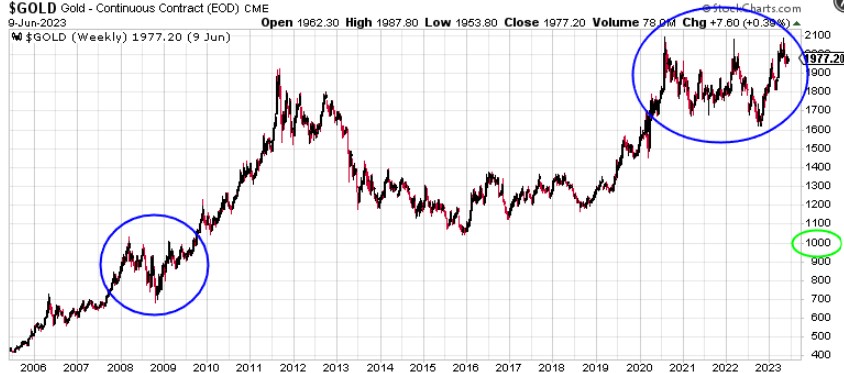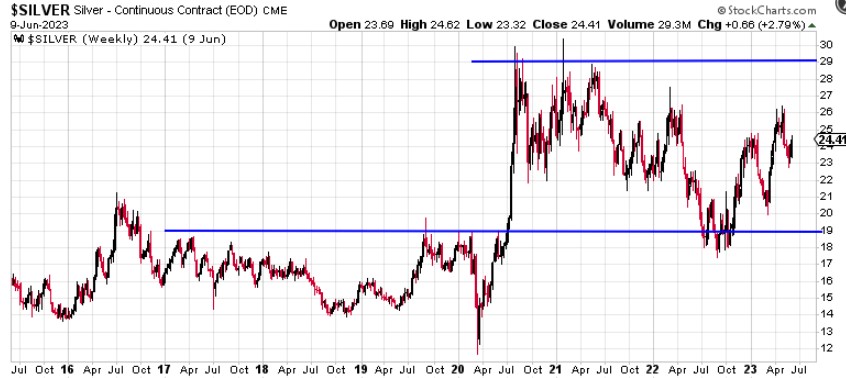
June 2023: The Role of Gold and Silver In Today's World
Over the last century, the role of gold and silver has changed in the global financial system. Its 5,000-year history as money will always remain because of its attributes of being tangible, portable, and of cultural value. However, we must also deal with the reality that gold and silver have not been widely used as monetary items for nearly sixty years.
Since the collapse of the Bretton Woods agreement in the early 1970s, these two metals have steadily moved into a position of being a form of insurance to hedge against a) whatever monetary schemes governments conjure up and force on their citizens by fiat and b) the stability of a nation's government, which interestingly has historically been directly correlated to their ability to manage the former.
Today, we are dealing with an economic and monetary system that has become globally intertwined, highly complex, and unstable. Given their historical correlation, it is no coincidence that, simultaneously, the geopolitical landscape is also deteriorating.
The question is, how important is it then to hold some gold and silver as "financial insurance?"
The decision to buy insurance of any kind, be it car, homeowner, business, or financial, is determined by its cost relative to the risk of what it is insuring. As an example, a healthy twenty-year-old would see paying $75 per month for a $1 million term life insurance policy as expensive relative to the risk of their dying. If that were the price, they would likely choose not to buy it. However, a healthy sixty-year-old would see paying $100 per month as inexpensive. If it were offered at that price, they might jump on the opportunity.
Likewise, a $1,700 per ounce price of gold in a geopolitically and economically stable world might seem expensive. Given the price action of gold over the last ten years, a price between $1,900 and $2,100 per ounce in a world experiencing the economic and geopolitical challenges present today seems inexpensive relative to the risk they are insuring.
In absolute terms (the price per ounce), could they become even less expensive? Of course. The state of the global financial system is increasingly tenuous. A major disruption could cause panic selling of "paper" gold assets to raise liquidity, resulting in a sharp, albeit temporary, drop in the price.
However, that scenario is not guaranteed to repeat this time. Over the last few decades, the "flight to quality" for panic sellers needing liquidity has been to hold currencies and government bonds. Today, those very bonds back most global currencies and yet are a known primary source of our present financial system instability. What will they consider a "flight to quality" when the previous "quality" instruments are highly suspect?
Now you see why we have been more vocal over the last several months that now is the time to accumulate these metals. However you choose to do so, be it on a schedule or all at once, and whether held in a depository or at your home, we are here to serve you.
All the best,
The OWNx Team
Gold and Silver
What Do the Charts Say?


We will once again examine the price action of gold over a twenty-year timeframe, only this time from a different perspective than we did in our last newsletter. What we see is a very interesting development. During the 08/09 financial crisis, gold battled for eighteen months to surpass the $1,000 per ounce mark.
Notice how it made three attempts to cross that psychological barrier. The first was in early 2008. The second was a few months later and peaked at a lower price. Then there was a sharp rejection of the $1,000 level and a selloff that frustrated a lot of people. The third run came roughly six months later, peaking higher than the second attempt but lower than the first. A period of consolidation followed that lasted another six months. Then, finally, gold broke out and ran to just under $2,000 per ounce two years later. Those who bought gold and silver during this final consolidation period were rewarded with their patience.
What do we see today? A first piercing of the $2,000 level in mid-2020. A second nearly two years later peaked lower than the first. Then the most recent one peaked higher than the second but lower than the first. It's the very same pattern.
We don't know why these patterns repeat. Human psychology often contains distinct patterns of behavior. This pattern seems to align with the fundamental state of the world. If it repeats, those who accumulate gold and silver during this period will be rewarded with their patience.
Meanwhile, we see in the silver chart that it continues to do what it often does. Follow gold around as it completes its consolidation pattern, waiting for the time for both to break out and run.
Events that Move the Metals
OWNx offices will be closed July 4th for Independence Day.